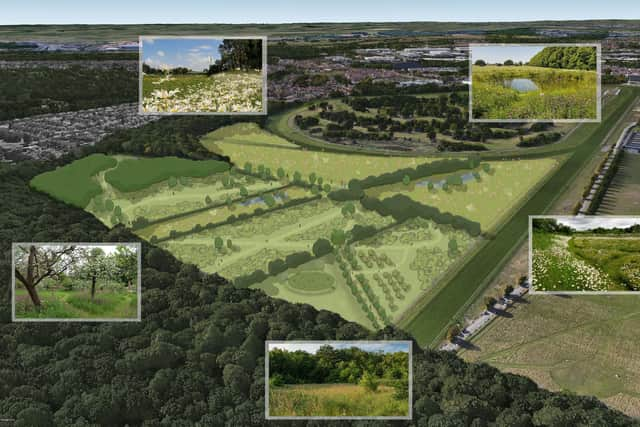Doncaster Council approves first habitat bank to offset biodiversity loss from development
and live on Freeview channel 276
Doncaster Council’s cabinet approved plans to build the borough’s first habitat bank on the former Red House Farm, which is near Sandall Beat Wood.
A habitat bank is a green site which is cultivated to restore wildlife and biodiversity that is lost from local development projects.
Advertisement
Hide AdAdvertisement
Hide AdThe current owners of Red House Farm will end their tenancy and sell the land to the council, with grass seeding to begin in September.


Following the development of the first habitat bank, the council will go on to acquire land for four more in the North, South, East and West of the borough.
It comes as a new national law is set to come into effect in November, which rules that most developments must result in a 10 percent biodiversity net gain.
While the council attempts to bring about a net gain onsite where possible, habitat banks will allow for this to be achieved in a separate, local location.
Advertisement
Hide AdAdvertisement
Hide AdThe new law will mean that developers are able to buy biodiverse land to achieve the targets on the open market anywhere nationally.
Local habitat banks will allow for the council to put forward a local alternative and reap the benefits of biodiversity gain in the borough.
Developers must contribute money towards the biodiversity gain of their schemes under the new law, which will fund the habitat banks.
The council also supported potential borrowing of up to £1m from its Environment & Sustainability/Net Zero Carbon Earmarked Reserve to begin the project.
Advertisement
Hide AdAdvertisement
Hide AdCabinet member for Sustainability and Waste, Councillor Mark Houlbrook said: “This is an exciting project which will see a significant area of wildflower grassland, species rich scrubland and woodland created right at the centre of Doncaster’s ‘Green Heart’ which will be managed and monitored over the next 30 years.
“This will be the first of several such sites for Doncaster and I am determined to see the benefits spread further afield so all our communities have enhanced opportunities for access to greenspace and to connect with nature.”